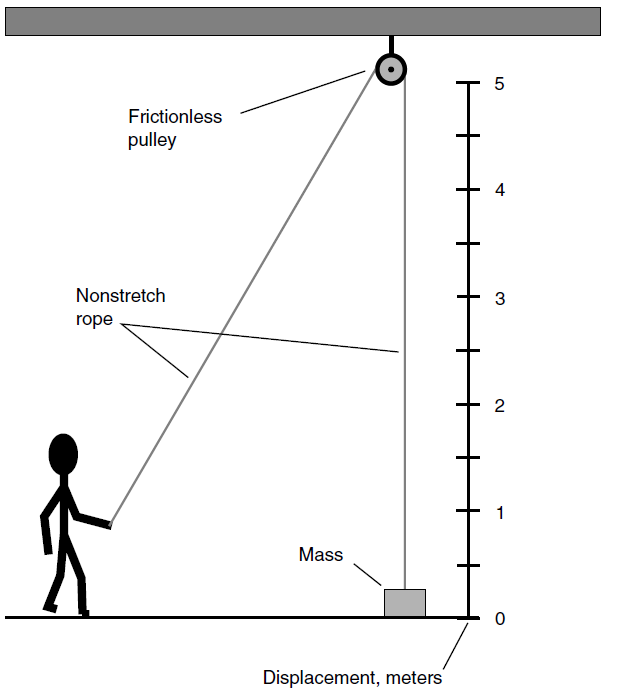


 الفيزياء الكلاسيكية
الفيزياء الكلاسيكية
 الكهربائية والمغناطيسية
الكهربائية والمغناطيسية
 علم البصريات
علم البصريات
 الفيزياء الحديثة
الفيزياء الحديثة
 النظرية النسبية
النظرية النسبية
 الفيزياء النووية
الفيزياء النووية
 فيزياء الحالة الصلبة
فيزياء الحالة الصلبة
 الليزر
الليزر
 علم الفلك
علم الفلك
 المجموعة الشمسية
المجموعة الشمسية
 الطاقة البديلة
الطاقة البديلة
 الفيزياء والعلوم الأخرى
الفيزياء والعلوم الأخرى
 مواضيع عامة في الفيزياء
مواضيع عامة في الفيزياء|
Read More
Date: 10-3-2021
Date: 15-9-2020
Date: 24-11-2020
|
POTENTIAL ENERGY
Look again at the situation shown by Fig. 1. When the object with mass m is raised through a displacement q, a force F is applied to it. Imagine what would happen if you let go of the rope and the object were allowed to fall.
Suppose that m = 5 kg. This is about 11 pounds in Earth’s gravitational= field. Suppose that the object is hard and solid, such as a brick. If you raise the brick a couple of millimeters, it will strike the floor without much fanfare. If you raise it 2 m, it will crack or dent a linoleum floor, and the brick itself might break apart. If you raise it 4 m, there will certainly be trouble when it hits. The landing of a heavy object can be put to some useful task, such as pounding a stake into the ground. It also can do a lot of damage.
There is something about lifting up an object that gives it the ability to do work. This “something” is potential energy. Potential energy is the same thing as work, in a mechanical sense. If a force vector of magnitude F is applied to an object against Earth’s gravitation and that object is lifted by a displacement vector of magnitude q, then the potential energy Ep is given by this formula:
Ep = Fq
This is a simplistic view of potential energy. As we just discussed, potential energy can exist in a barrel of oil even if it is not lifted. Potential energy also exists in electrochemical cells, such as the battery in your car. It exists in gasoline, natural gas, and rocket fuel. It is not as easy to quantify in those forms as it is in the mechanical example of Fig. 1, but it exists nevertheless.

Fig. 1. Work is done when a force is applied over a specific distance. In this case, the force is applied upward to an object against Earth’s gravity.



|
|
|
|
دراسة يابانية لتقليل مخاطر أمراض المواليد منخفضي الوزن
|
|
|
|
|
|
|
اكتشاف أكبر مرجان في العالم قبالة سواحل جزر سليمان
|
|
|
|
|
|
|
المجمع العلمي ينظّم ندوة حوارية حول مفهوم العولمة الرقمية في بابل
|
|
|